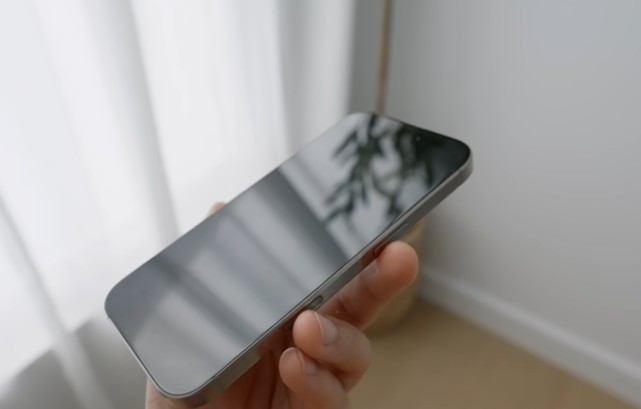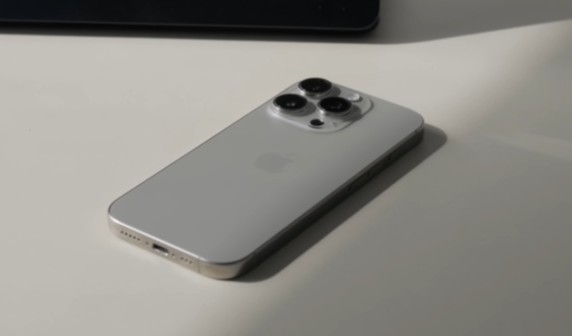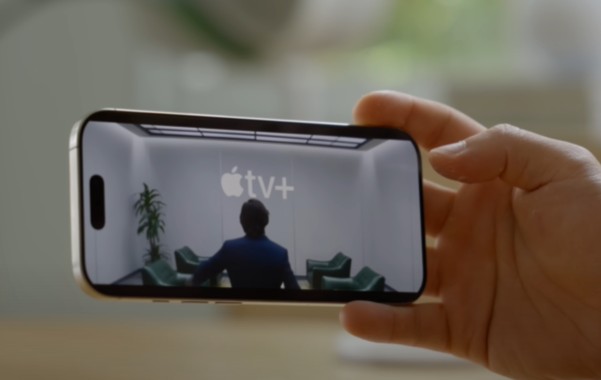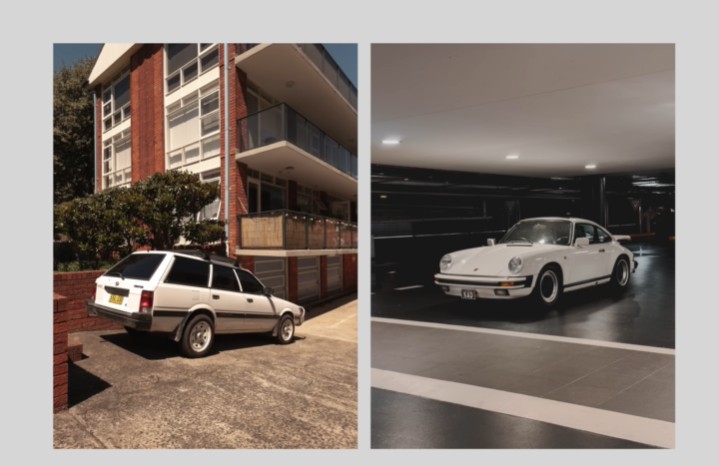After using the iPhone 16 Pro for a couple of weeks, I have mixed feelings. At first glance, it seems like a minor update from the iPhone 15 Pro. Everyday performance feels nearly identical, and much of the experience is familiar. But there are a few key changes worth noting.
- Battery Life: Slightly better than before.
- Cameras: Updated with new features and controls.
- Cooling System: Improved, but results vary.
- Performance: No major leap in day-to-day use.
Not all upgrades feel impactful. Some improvements worked well in my tests, others not so much. This isn’t a groundbreaking release, and many features promised aren’t fully available yet. But if you look closely, there are subtle changes—some good, some questionable.
If you’re considering the 16 Pro or just curious about real-world performance, here’s what my experience has been like.
Design and Durability
The design of the iPhone 16 Pro is slightly bigger in size with a 6.3-inch display versus 6.1-inch last year, but it has smaller bezels around the edges that make the physical size just a hair bigger with 3mm added in height and 1mm added in width. That also makes this heavier than last year’s Pro, going from 187g to 199g, which is about on par with the old stainless steel Pro iPhones. But I think the screen size and form factor is really the sweet spot for me personally as it gives you a reasonable amount of screen real estate without the phone feeling too clunky. Outside that, visually things haven’t changed all that much.

You’ve got one new color option, if you want to call it a color, in Desert Titanium but I just went with white this year. I’m not really a fan of anything else, and I wish there was an actual bright color like the regular 16s have with teal and ultramarine options, but honestly most people are just going to slap a case on, so it’s really not that big of a deal.

I have found finding the right case to be somewhat complicated this year all because of the new camera control button that sits along the bottom right edge of the phone under the power button. That is both a physical button that you can press combined with capacitive touch and a haptic engine that allows you to perform different functions. I went over this in detail last week in my iPhone 16 review, look there, but essentially a full press of that button will launch the camera app and take a photo within the app.
Holding it down will record a video, while a half press or soft tap will open up this little control menu for making adjustments to your photo or video, and a double half tap allows you to switch the adjustment that you want to make. I found this really finicky, and it’s taken a while for me to effectively use it, but I still do fumble around with it quite a bit, and at least for me, I’m still kind of the opinion that on-screen controls are just much easier to use. This is especially true with one-handed use in a vertical orientation. The camera control is super awkward trying to navigate. The placement is also a common touch point for me, so sometimes I’ll inadvertently open up the menu while the camera app is open or accidentally take a photo, which obviously isn’t ideal.
That’s why I find choosing the right case to be so complicated. You essentially have two options for cases where you can either get one that transfers the capacitive touch functionality through a case button and keeps the edge flush—you’ll find that on the Apple-branded cases along with a couple others—or option two, which most third-party cases have, is having a button cutout there with a notch in the case. I think the cases with flush edges look much nicer, but the ones with the cutout do feel a bit more functional in that it’s both a little bit easier to find the camera control and less prone to inadvertently hitting it. With a flush edge, it can sometimes be hard to know exactly where the button is, so if you can find a case with a notch that isn’t too obvious, that feels like the best option to me.
Display

The display, mostly because outside of the slight increase in size, the panel has stayed roughly the same, with the exception that it does go all the way down to one nit. So, say if you use your phone in standby mode at the side of your bed, the screen can go a lot dimmer and won’t blast you with light. There’s also a really weird issue right now that was reported that I didn’t initially notice, but if you hold down on the edge of your screen where the camera control is and try to scroll, it actually won’t work, which I’m assuming is some kind of palm rejection software bug or something. But it’s just another thing with that camera control button that seems unfinished or a bit sloppy, right? Apple Intelligence is also unfinished and not out of beta, and it does seem like there are still a few bugs to work out there.
Performance
You’ve got a ton of power, and the new A18 Pro in the iPhone 16 Pro sees decent gains in both performance and efficiency in a variety of ways. The A18 Pro is definitely an incremental bump from the A17 Pro in the 15 Pro.
In CPU performance, you see about a 9 to 14% increase in benchmarks like Geekbench, which is fine. I don’t really think a lot of us utilize the full power of the CPU in our phones anyway. But the biggest changes are in the GPU, where you see about a 22% increase in benchmarks at about 5 to 6 more frames per second than the iPhone 15 Pro. That means gaming will run smoother, which the iPhone 16 Pro does incredibly well. I’ve tried out a ton of games from the Apple Store and Apple Arcade, and they’ve all run buttery smooth. While the phone does warm up a little, it’s nothing that I’ve been overly concerned with, as the phone dissipates heat much better than its predecessor.
When you look at the heat pattern, you can see the iPhone 16 Pro spreads heat out along the whole surface of the phone rather than just one area like the 15 and 15 Pro. If you’re wondering why the new cooling system isn’t making the phone run cooler, I just want to take a second to explain that a bit. None of these phones have fans in them, so at some point, they’re all going to throttle to control heat, especially when pushing them in benchmarks. That’s why you’ll see temperatures stay roughly the same at the high end.
But what happens when that heat is dispersed along the surface better is it not only takes longer to hit that threshold, but you’re able to run at a higher level of performance at that temperature limit. That improves not only gaming but any resource-heavy apps like photo or video editing. It helps with heat while pushing the camera system and can decrease overall heat on lesser workloads, which will increase the battery life, which the A18 Pro is supposed to be much better at as well. Apple says this chipset is 20% more power efficient.
Cameras
The iPhone 16 Pro has undergone significant changes in terms of cameras, with the main camera now having a 5x tetraprism telephoto lens and a new 48-megapixel ultra-wide lens replacing the 12-megapixel one on the 15 Pro. While photos still look great off the main camera, shadows are sometimes boosted too much, which can be adjusted with the new tone and style options.

Photos and Zoom
- Ultra-wide shots are captured at 12MP (binned down) and look similar to the iPhone 15 Pro.
- Macro photos look great on the ultra-wide lens too.
- The telephoto lens now offers 5x zoom (up from 3x), which is better for distant shots.
- However, 5x zoom might feel too much for some everyday uses. Still, the quality is decent.

Photo Editing Tools
- Apple adds heavy post-processing to photos, especially boosting shadows to retain detail.
- New Style and Tone controls let users adjust how photos look:
- Tone: Adjust shadows and contrast.
- Style: Change the overall look (like filters or film simulations).
- These tools are context-aware, so they treat skin, objects, and backgrounds differently.
Camera App Quirks
- In video mode, some camera options appear grayed out or non-clickable, which may confuse users.
- Enabling RAW photo mode hides the Style and Tone button from the UI—but it’s still in the control menu.
- This inconsistency might frustrate users, especially those using Apple Log for advanced video control.
Video Quality
- Standard video looks excellent.
- Cinematic mode continues to impress with smooth lens transitions.
- iPhone 16 Pro remains the best phone for video, with:
- Seamless external SSD recording
- Support for 4K 120fps in Apple Log (requires SSD due to large file sizes)
New Audio Mix Feature
Mic quality is on par with professional lavalier or dedicated mics—perfect for content creators.
A four-mic array now supports advanced audio mixing.
Battery Life
I have to say battery life was one of the first things that I immediately noticed while using the 16 Pro, where my 15 Pro would often use around 80% of my battery by the evening. The 16 Pro is lasting me much longer, and on days where I’ve been just using my phone regularly, I can usually extend my usage by an extra hour or two of screen-on time. Just be aware that if you’re doing something like recording an Apple Log, especially to an external SSD and in higher frame rates, that’s still going to chew through the battery in a few hours. But the nice thing is you do have a faster charging option this go-round. The 16 Pro has improved wireless charging, or with a new 25W MagSafe charger, you can get around 50% charged in 30 minutes or so. It also stays relatively cool while charging wirelessly, so you don’t really have to worry about this degrading your battery in any way.
Speaking of wireless, as far as connectivity goes, you’ve got Wi-Fi 7 this year over Wi-Fi 6E last year. If you’re like the majority of folks and you don’t have a Wi-Fi 7 modem, that’s going to feel pretty much the same. You get outstanding speeds provided you have adequate bandwidth on your network, and Bluetooth stayed the same with version 5.3, and I haven’t had any issues.
Conclusion
What we’ve talked about here today, from performance and battery life and all kinds of stuff, but just like anything on the channel, I’m only going to review or talk about the things that are finished and that I can touch at the time of making the video.
Even without Apple Intelligence, I still think this is a great phone. I personally love the additions to the video and audio features. You’ve got a great camera system, outstanding performance, and most importantly for me, the battery life does seem to be much better over my 15 Pro.
The camera control, on the other hand, is pretty disappointing, and the more I use it, the more I think I’ll just likely disable it. On-screen controls make a lot more sense and are just easier to use, but we’ll see how that works for some of the AI features it’s designed around when they come out.



